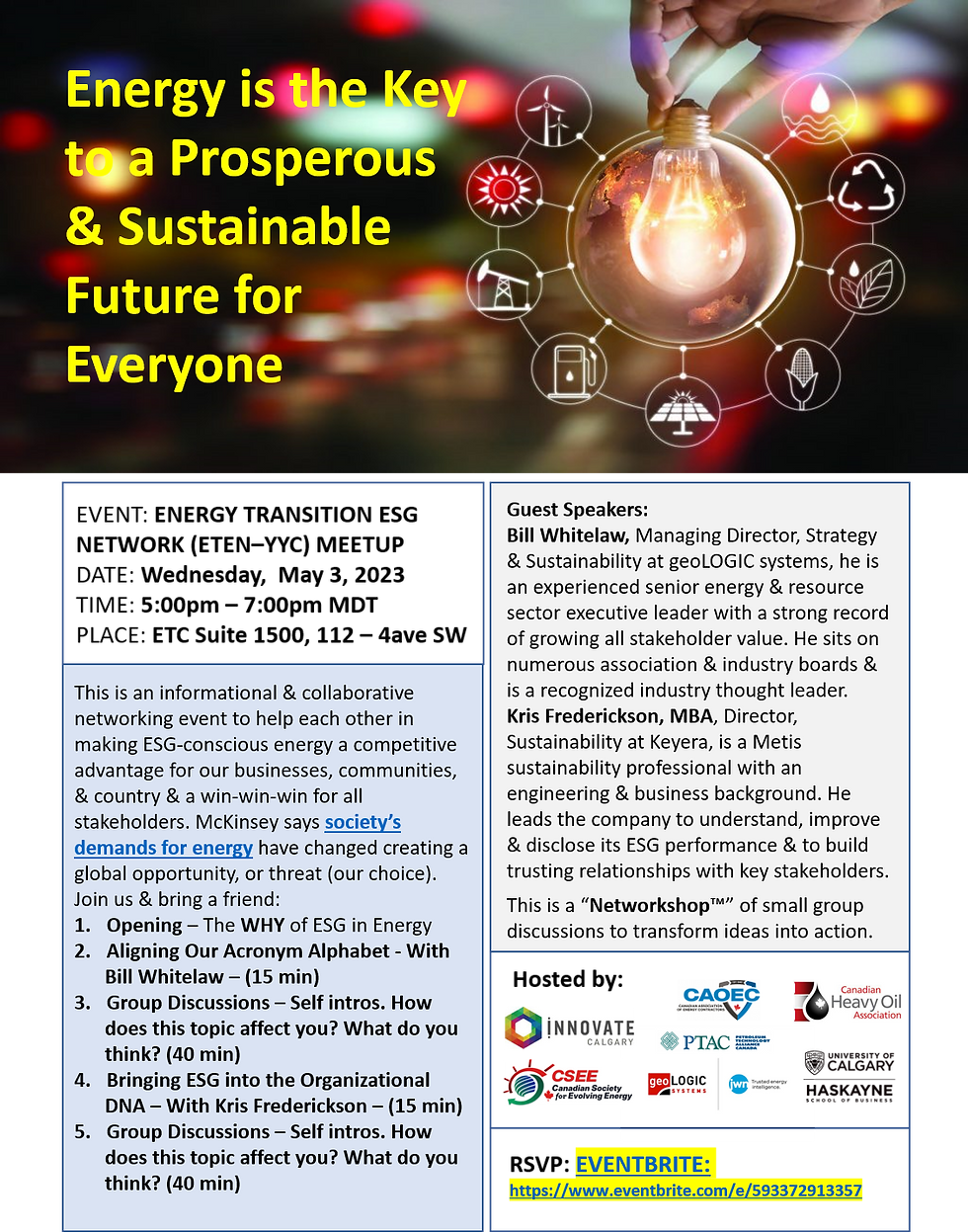“ESG” WON’T SAVE THE WORLD THE WAY WE ARE DOING IT TODAY!
- Brad Gaulin
- Feb 16, 2022
- 4 min read

A recent Bloomberg article titled THE ESG MIRAGE, describes that the version of ESG (environment, social, governance) being driven by investment houses and their rating services today is not protecting the planet, or people, it is protecting corporate profits. It outlines how the measurement and benchmarking of ESG by the financial community is being manipulated to their own market value maximization purposes. This was flagged in the spring of 2021 in the SEC’s issuing its first-ever risk alert on ESG disclosures. The alert was associated with finding that ESG portfolio managers were consistently having problems matching sustainable words with sustainable deeds. In other words, the SEC is saying there are systemic problems with “ESG washing”. In his article, Chris Saca did a review of Blackrock (the largest ESG private equity company in the world) and took them to task for doing exactly that.
I wrote a previous article asking if ESG would save the world, and my concern was that with the investors and media focus on ESG reporting, and benchmarking, it would become a numbers game, and that would create another tail wagging the dog situation where companies would focus just on the numbers and do whatever it takes (ethical or not) to meet their expectations. Sadly, it looks like Bloomberg and the SEC has confirmed my worst fears.
In a presentation I was doing on ESG conscious business to a tech association, there was a debate on ESG reporting standards and which was the right one. Given the lack of a universally accepted, stakeholder-neutral methodology for measuring ESG, it begs the question, “Who will be the arbiter of truth to ensure ESG actually means something?”, certainly not rating services like MSCI. My point was that we won’t solve the reporting and rating standards problem anytime soon and we can’t afford to wait for a solution to start taking action. We must be taking on these sustainability issues and responsibilities in our businesses today, now, immediately, regardless of “ESG standards”.

My position is that this focus on ESG reporting and standards is backwards. If all you want to do is tick boxes in the one size fits all ESG report then you are simply “ESG washing”, which will never save the world for future generations. If we are going to save the world then we must bring the ESG conscious business philosophy and values into the very DNA of our organizations. We must live it every day, top to bottom and bottom to top in our organizations as an integrated aspect of our core values. Doing that, it becomes easy to fill in anyone's report if we are truly living it. We must be living sustainability because it is the right thing to do, and it will get us the right results, which we can then report on to all of our stakeholders, not just to please financial analysts. We only win a better future for our children if we focus on the ESG dog (doing), not the ESG tail (reporting).
I’ve seen lots of first-hand evidence of ESG washing, so to help identify how genuine your ESG efforts are, I’ve shared a checklist of characteristics that reflect the difference between truly living ESG conscious values, versus doing it primarily for public/investor relations (PR/IR) purposes (ESG washing).

CHARACTERISTICS OF CONSCIOUSLY LIVING ESG:
Serves all stakeholders
Ecosystem approach
Focuses on impact maximization
Exists and is driven broadly across the organization
Incorporates higher purpose and caring culture
Reconciles caring and profitability
Views business as a complex, adaptive system
Shared vision and common will
Learns from the past, envisions the future
Greater stakeholder awareness and participation

CHARACTERISTICS OF ESG WASHING:
Views ESG as a trade-off between profit and social good
Independent of corporate purpose or culture
Adds an ethical burden to business
Often grafted onto the traditional business model, usually a separate department or part of public/investor relations
Sees limited overlap between business and society
Exists and is driven primarily at the board or senior executive level
When you review these lists, how does your organization stack up? Are you even having these conversations within your organization? What do you think are the implications for your business of the ESG mirage and what do you need to do about it? Being genuine is the key to ESG saving the world, we must ensure our words and our actions align.

In conclusion, I am still passionate about ESG conscious businesses becoming the new normal and leading society in creating a sustainable and prosperous future for everyone. John Jones advice; “what gets measured gets done, what gets fed back gets done well and what gets rewarded gets repeated”, absolutely applies to ESG, but business must put first things first. It has to take on the big global problems (regardless of short-term profit), building truly sustainable/ ESG conscious business cultures. Then use ESG as a KPI to drive continuous improvement, operational excellence and ensure all stakeholders are being served. Saving the world is a global change initiative unlike any other, the real question is can we change and evolve fast enough to save our children and grandchildren? The planet will survive regardless, but will humanity end up being just another layer in the geological record of our planet?
If these ideas aren’t a part of your organization’s strategic conversations, then you’d better get started before you find it hard to attract investors, customers, employees, partners and a social license to grow. This is your call to action to bring ESG conscious thinking into the DNA of your business and make sure you are living it, not just ticking boxes on a report.




Comments